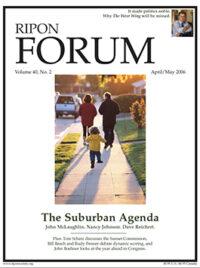
It is hard to find any serious economist who would argue that the federal government’s tax and spending policies make no difference to U.S. economic performance.
Indeed, all across the political spectrum and throughout the leading schools of economic thought, a broad consensus exists that what governments do with tax dollars and how they raise those revenues matters in the larger, dynamic, economic world.
Thus, one would suppose that President George W. Bush’s call for a new Dynamic Analysis Division in the Department of Treasury’s Office of Tax Analysis would be met with overwhelming approval. After all, the new division’s purpose is to advise the President and key policy makers on how proposed tax policy changes would affect economic activity and to use the latest advances in economic modeling to prepare that advice.
This new division may also be laying the groundwork for dynamic scoring, which is a revenue estimation technique that uses models of the U.S. economy in conjunction with so called static, non-economic models to estimate revenue change. That’s good news, if you believe that better government results from improving the information policy makers get when they are deciding on competing choices. It is even better news when one realizes that dynamic scoring not only involves more experts in the policymaking process, but provides engaged citizens, who are now outside of the “secret chambers” of policy formation, a better ability to see into the process, itself. The result is better tax policy and more transparent government by including more economics in our tax policy work.
The only criticism to greet this wholly sensible move toward better tax policy has focused on the likelihood that creating this division for dynamic or economic analysis does, indeed, constitute a major step toward dynamic scoring. Those analysts who worry about dynamic scoring base their concern in large part on a suspicion that the only reason for implementing this technique is to show that tax cuts cost less than current official estimates. For example, a static, noneconomic tax model says that a tax rate reduction might cause the government to lose $25 billion dollars, but a dynamic score that includes economic activity might estimate the revenue loss at only $12 billion, because a stronger economy produced more taxable income than the static model assumed.
At a deeper level, opponents of dynamic scoring generally also oppose tax policy changes that focus primarily on the after-tax price of labor and capital, which most economists believe are the crucial connectors between tax policy and the economy. They favor instead targeted tax cuts, or tax credits and deductions that subsidize certain types of economic and social behavior over others. These critics believe that if the government were to adopt dynamic scoring, the economic models would show that targeted tax cuts do little for the economy when compared with across-the-board rate reductions on labor and capital income. This showing might induce policy makers to abandon targeted tax cuts in favor of more broadly applied tax policy changes (like the 2001 and 2003 Bush tax cuts).
No one knows, of course, what policymakers will do, even when they possess the very best analytical tools. This we do know, however: the standard, conventional or static tax models that are used today by the official revenue estimators in Congress’s Joint Committee on Taxation (JCT) and the Congressional Budget Office are highly inaccurate because they do not include the economic effects of tax policy changes. It is this record of inaccuracy and, thus, bad policy advice which has fueled the interest in dynamic analysis and scoring and will, I believe, lead to the inevitable adoption of dynamic scoring techniques.
In the real world, we know that businesses and consumers will respond to both tax cuts and tax hikes, and they do so in fairly predictable ways. Tax cuts spur investment, which spurs hiring, which spurs additional payroll taxes – and that leads to a positive feed-back effect for government treasuries. Yet it is exactly this kind of feedback effect that static analyses miss.
It happened in the early 1960s, when President Kennedy’s plan to cut the top marginal tax rate from 91 percent to 70 percent took effect. Total tax revenues actually climbed 4 percent, despite predictions that the cuts would plunge the country deeply into debt. It happened again when President Reagan cut the top rate from 70 percent to 50 percent in 1981. Economists employing the static models now in use at key government agencies predicted federal revenues would fall by $330 billion over five years. Instead, they fell by $79 billion, and the economy boomed.
Even more interesting is the recent revenue growth from capital gains. The JCT forecast revenue declines following the 2003 tax rate reduction. That’s exactly what many in official Washington expected, too. However, the recent explosion in capital gains revenues — now well above the $40 billion forecast — indicates the strong economic reaction that followed the cut in the after-tax price of trading appreciated assets, like stocks and bonds.
In these cases, taxpayers got higher post-tax incomes, expanded economic opportunities and better financial security. The government got a faster-growing economy, more people working, more taxable earnings per worker and, thus, more revenue than “static” estimates had predicted.
Advocates of dynamic scoring must be careful not to oversell its capabilities or benefits. There are legitimate disagreements about which economic models best capture the economic effects of tax policy changes. There also is little reason to believe that tax cuts, even the best ones, will pay for themselves right away through super-nova revenue reflows from a stronger economy. Finally, the technical difficulties of economic modeling mean that this technique should be reserved for only the most important tax issues.
Even so, we get better, more transparent government by encouraging the introduction of more economics into the evaluation of tax policy choices and the occasional use of dynamic scoring models to advise policy makers on the really big tax bills. Better government and better tax policy is, I believe, a winning combination of benefits that assures the widespread adoption of dynamic analysis and scoring.
William W. Beach is the Director of the Center for Data Analysis at the Heritage Foundation.




